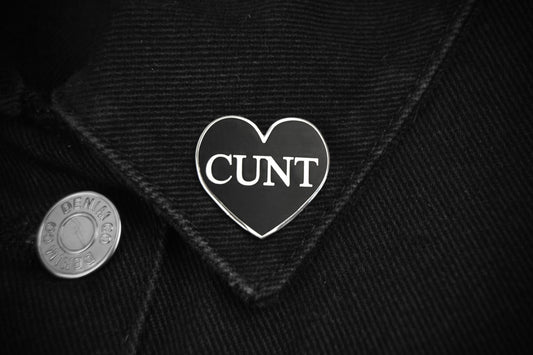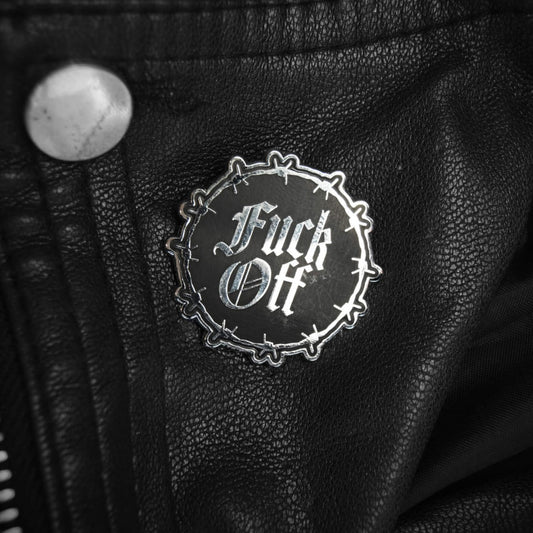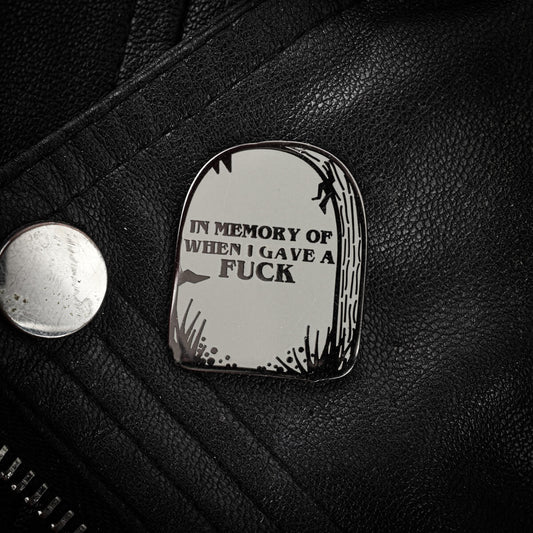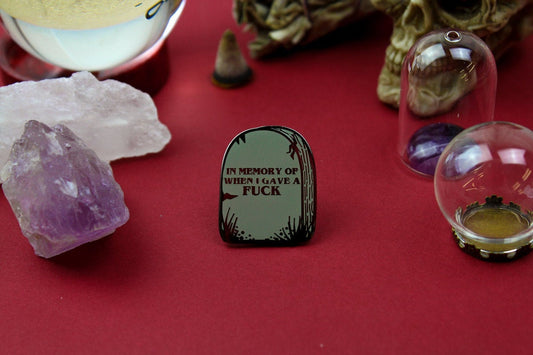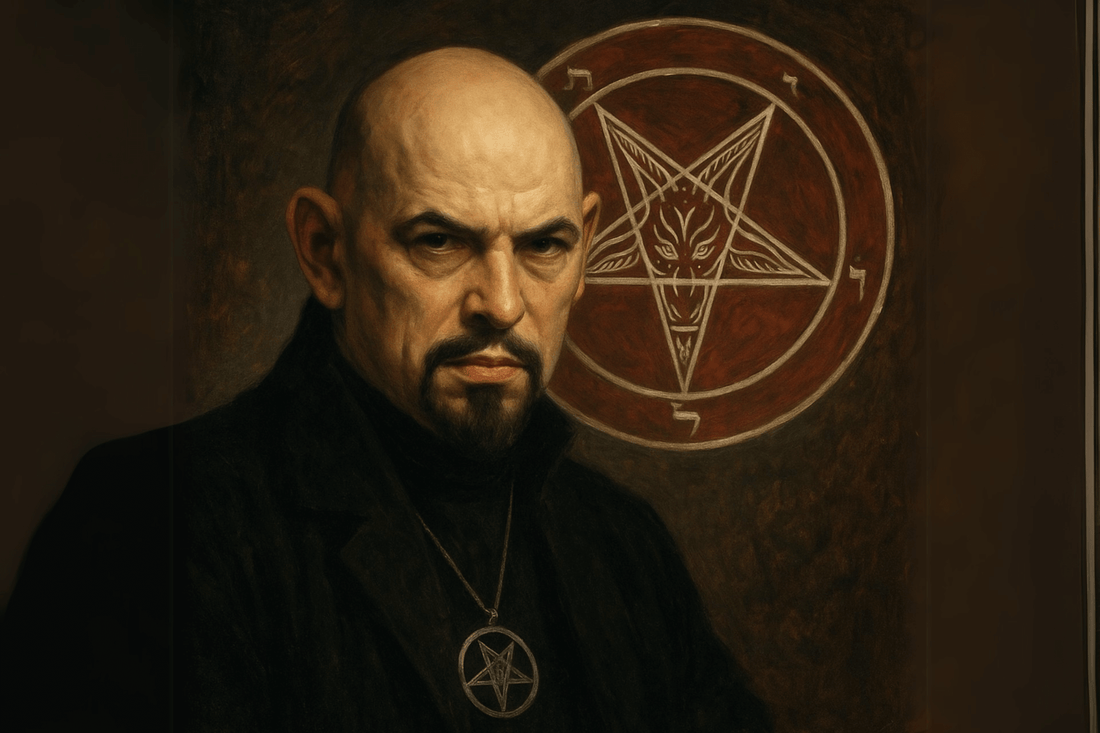
Who is Anton LaVey?
Share
Anton LaVey is one of the most misunderstood figures of the 20th century. Depending on who you ask, he was either a genius, a fraud, a philosopher, or a pantomime villain. He’s best known for founding the Church of Satan in 1966 and writing The Satanic Bible, a book that laid out a new religion based on rational self-interest, theatrical ritual, and open rejection of Christian morality.
LaVey didn't just adopt the image of Satan - he essentially turned it into a tool. But crucially, not for evil, but for provocation. With his shaved head, black robes, and pet lion, he knew how to get attention. But behind the image was a set of ideas about human nature, power, and hypocrisy that struck a nerve with people tired of guilt and conformity.
Here we’ll try to break down who Anton LaVey really was, what he believed, and why his legacy still matters nearly three decades after his death.
Key Points:
- Anton LaVey wasn’t a devil worshipper. He wasn’t a con artist in the way some critics suggest, either. He was something in between - a showman with ideas, a thinker who used theatre to deliver philosophy. He understood the power of symbols and wasn’t afraid to twist them. That’s what made him effective - and controversial.
- At the core of his work was a simple message: stop apologising for who you are. Reject guilt. Take control. Don’t follow. Lead. It was brutal, sometimes cold, but it resonated with people who felt suffocated by religion or society’s expectations.
- LaVey blurred lines. Was he serious or playing a role? Was he building a religion or dismantling one? That ambiguity is part of his legacy. Even now, people can’t quite agree on what he was - or what he wanted. But his influence is still visible in the subcultures he helped shape, and in the continued debate over where religion ends and theatre begins.
- He didn’t claim to be a saviour. He claimed to be honest. Whether that was always true is still up for debate - but he made people ask questions. That, more than anything, is why he still matters.

Public Domain, Link
Early Life and Background
Anton LaVey was born Howard Stanton Levey on April 11, 1930, in Chicago, Illinois. His family moved to San Francisco when he was young, and it was there that he grew up - first as a curious child, then as a showman-in-training. From an early age, he was drawn to the fringes of society. He claimed to have seen through the hypocrisy of mainstream life while still a teenager.
Much of LaVey’s early biography is murky. He told stories of working as a carnival organist, playing the calliope for burlesque shows, and even taming lions in a circus. He also said he worked as a crime scene photographer for the San Francisco Police Department, which supposedly hardened his views on human behaviour. Whether these claims are entirely accurate is still debated - even by his own biographers.
What’s clear is that he was obsessed with drama, mysticism, and control. He studied the occult, psychology, and philosophy, and read widely on topics like ritual magic, Nazi propaganda, and crowd manipulation. He also had a flair for performance. By the late 1950s, he was hosting weekly lectures at his San Francisco home - on topics like forbidden knowledge, religion, and eroticism. These salons became the foundation for what would become the Church of Satan.
LaVey’s background wasn’t academic or religious - it was theatrical, rebellious, and rooted in showmanship. He didn’t come from a long line of mystics or priests. He made himself into a figure of power by tapping into spectacle and using it to deliver ideas that challenged the status quo.
Founding the Church of Satan
In 1966, Anton LaVey declared the founding of the Church of Satan, calling it the beginning of Year One, Anno Satanas - the first official year of the Age of Satan. The announcement came with all the drama you'd expect: a public ritual, heavy symbolism, and LaVey taking the title of High Priest. It wasn’t subtle, but it wasn’t meant to be.
He saw organised religion as hypocritical. Christianity, in particular, preached self-denial while its leaders often lived in excess. LaVey’s Church was a direct rejection of that. It was a religion for outsiders - those who felt oppressed by guilt, rules, and herd thinking. But it wasn’t about worshipping the devil. It was about embracing the self as the highest authority.
In 1969, he published The Satanic Bible, a manifesto that mixed philosophy, ritual structure, and savage critique of traditional religion. It became the foundational text of LaVeyan Satanism. The book outlined beliefs such as indulgence over abstinence, eye-for-an-eye justice, and personal accountability. Satan, in this system, was not a literal demon but a symbol of pride, freedom, and defiance.
The Church of Satan quickly gained attention. Celebrities like Sammy Davis Jr. and Jayne Mansfield were linked to LaVey, either as members or close friends. The media couldn’t get enough - black masses, naked altars, gothic interiors. LaVey played it up. He knew that mystery and outrage kept people watching.
But beneath the theatrics, the Church was serious about its message: human instincts are not sins, and people should stop feeling guilty for being who they are. Rituals weren’t about magic - they were about self-expression and emotional release. LaVey called it “psychodrama.” Others just called it blasphemy.
Either way, the Church of Satan carved out a cultural space no one else dared to touch. And LaVey, with his bald head and booming voice, became its face.
What did he actually believe?
Despite the Satanic imagery, Anton LaVey’s beliefs were grounded in realism, not mysticism. He didn’t believe in a literal devil. In fact, he didn’t believe in any gods at all. Satan, to him, was a symbol - a powerful metaphor for human nature, individualism, and rebellion against authority.
LaVeyan Satanism centres on the self. You are your own god. Your instincts, desires, and choices take priority. Instead of worship, there’s celebration of the self. Instead of guilt, there’s indulgence - within reason. He wasn’t advocating chaos or harm, just freedom from religious shame and herd mentality.
The Satanic Bible lays out these ideas in a series of essays and aphorisms. It praises traits like pride, vengeance, and lust - not because they’re evil, but because they’re natural. LaVey saw traditional religion as trying to repress these instincts and replace them with blind obedience.
Ritual played a role, but not for supernatural reasons. LaVey saw ritual as a tool - psychological theatre designed to focus emotion, relieve tension, or mark personal transitions. He wrote rituals for destruction, lust, and compassion, all meant to serve the performer’s emotional needs. It wasn’t about calling on dark forces. It was about using symbolic action to affect your mindset.
LaVey’s worldview was harsh but consistent. He believed the strong should lead, the weak should know their place, and sentimentality was a trap. He criticised equality as a myth and viewed kindness as something to be earned, not freely given. This led to criticism from both religious and left-leaning thinkers, some of whom called his views elitist or cold.
Still, for those tired of guilt-based morality and spiritual dogma, his ideas offered something new - something unapologetically blunt. LaVey wasn’t trying to save souls. He was telling people to own themselves.

Jayne Mansfield, High Priestess of San Francisco's Church of Satan.
By ETH-Bibliothek Zürich, Bildarchiv / Fotograf: Comet Photo AG (Zürich) / Com X-M103-006 / CC BY-SA 4.0, CC BY-SA 4.0, Link
Media and Myth
Anton LaVey knew how to manipulate an audience. He wasn’t just a writer or a thinker - he was a performer, and he used media like a weapon. In interviews, photo shoots, and TV appearances, he leaned fully into the image of the “Black Pope.” Bald head, goatee, flowing robes, candlelit rooms - he turned his life into theatre.
The media couldn’t resist. He featured in magazines, documentaries, and chat shows throughout the late 1960s and ’70s. Sometimes he spoke seriously about philosophy. Other times, he played up the shock factor. He posed with a leopard. He gave press access to his home, the so-called Black House in San Francisco, complete with ritual chambers and dramatic decor. It was part museum, part haunted house, and part stage set.
His embrace of imagery led some to question whether he was genuine. Critics said he was more interested in fame than philosophy. Others accused him of being a conman, pointing to inconsistencies in his background - jobs he claimed to have had, people he said he knew. Some of it couldn’t be proven. Some was flatly denied by those involved.
But that ambiguity worked in his favour. It made him larger than life. Like other counter-cultural icons of the time, LaVey blurred the line between truth and myth. That was the point. He believed symbolism had power - real or invented. If people feared him, or admired him, it didn’t matter. They were paying attention.
He also understood the hypocrisy of his critics. Religious figures accused him of fakery while hiding their own scandals. Moralists attacked his showmanship while profiting from outrage. LaVey held a mirror to all of it. His philosophy wasn’t just in the pages of his books, it was also in the performance. That’s why, love him or hate him, people still talk about him decades after his death.
Controversies and Criticism
Anton LaVey thrived on controversy, but not all of it was on his own terms. Plenty of critics challenged his ideas head-on. Religious groups condemned him as dangerous or evil, though many had never read a word he wrote. More thoughtful critics called his philosophy selfish, shallow, or even authoritarian. His focus on strength, dominance, and personal power didn’t sit well with people who believed in compassion as a social necessity. Some said he promoted cruelty. Others just found his rejection of empathy disturbing.
But the bigger issue for many was LaVey himself. His personal history was full of exaggerations. He claimed to have worked as a crime scene photographer for the San Francisco Police Department - there’s no record of that. He said he had affairs with celebrities like Marilyn Monroe - also unproven. Several parts of his backstory, especially in the early years, were impossible to verify and seemed designed for drama rather than accuracy.
Even some of his closest allies turned on him. Former members of the Church of Satan accused him of turning the group into a fan club. They said he became more focused on selling memberships and collecting fees than promoting any serious ideology. His leadership style was often described as rigid and egotistical. He ruled the Church like a monarch, not a democratic organisation.
Despite this, his defenders argue that none of the personal embellishments change the core of his work. The philosophy stood on its own. They say LaVey understood the power of myth, and if he built one around himself, it was just another layer of performance - an extension of the psychodrama he encouraged in others.
LaVey never claimed to be perfect. He didn’t aim to be moral, saintly, or even consistent. He aimed to be honest about human nature - as he saw it. To some, that made him a visionary. To others, it made him dangerous. Either way, he left no one indifferent.

By Marc Nozell - https://www.flickr.com/photos/marcn/32661071467/, CC BY 2.0, Link
Influence on the World
Anton LaVey died in 1997, but his impact didn’t end there. His writings, ideas, and public persona laid the groundwork for what’s now known as modern Satanism. Whether you agree with his views or not, it’s hard to deny how deeply his work reshaped the conversation around religion, rebellion, and personal autonomy.
The Church of Satan still exists today. It continues to promote LaVey’s philosophy, though it has become more private and selective in the years since his death. The group avoids public ceremonies and focuses on individualism, rational self-interest, and atheistic values - much like its founder intended.
But not all Satanic movements stayed under the Church’s umbrella. In 2013, a new group called The Satanic Temple emerged. While they also reject belief in the supernatural, their approach is more political and activist. They campaign for religious equality, women’s rights, and freedom of speech. Though inspired by LaVey in some ways, they’ve distanced themselves from his more elitist views and authoritarian tone.
Beyond formal groups, LaVey’s ideas have bled into pop culture. Heavy metal bands, horror films, graphic novels, and even fashion have all drawn on the aesthetics and symbols he made famous. Controversial figures like Marilyn Manson openly referenced LaVey’s work, which doesn’t help with his negative image. His philosophy of embracing taboo and rejecting conformity has found new audiences among artists, goths, libertarians, and people disillusioned with organised religion.
LaVey’s legacy is complex. He didn’t start a mass movement, but he created a framework for people to think differently. He offered a belief system without gods, guilt, or false humility - and he made it dramatic enough to survive long after he was gone.
Whether seen as a prophet of self-empowerment or a master of manipulation, Anton LaVey left a mark that still ripples through underground culture, political discourse, and the way society thinks about belief and defiance.
